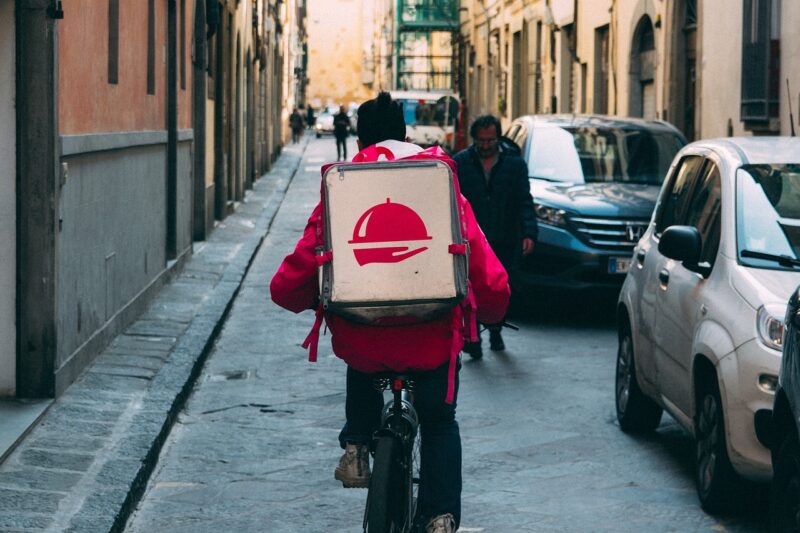How UberEats and Other Food Delivery Apps Changed Dining Forever
November 14, 2024

In recent years, the way we dine has undergone a revolutionary transformation – and the driving force behind this change is the emergence and proliferation of food delivery apps like UberEats, DoorDash, and Grubhub. These platforms have fundamentally altered consumer behavior, reshaped restaurant operations, and established a new norm in the food industry. In this article, we’ll delve into how these apps have influenced dining experiences, redefined convenience, and set the stage for the future of food delivery.
1. The Rise of Food Delivery Apps
The food delivery industry was not born overnight. Before the rise of these apps, delivery options were limited to local pizza joints, sushi spots, and Chinese takeout. The concept began gaining traction in the 2000s, but it was only when smartphones became ubiquitous that the demand for a seamless, user-friendly, and efficient food delivery service skyrocketed.
UberEats launched in 2014, changing the game by leveraging Uber’s existing infrastructure and technology. Soon after, competitors like DoorDash and Postmates emerged, offering diverse selections and enhancing the delivery experience. Today, food delivery apps represent a multi-billion-dollar industry, growing steadily as more consumers opt for convenience over traditional dining.
2. Convenience Redefined
One of the most significant effects of food delivery apps is the redefinition of convenience. Once upon a time, ordering food required picking up a phone, navigating a menu, and waiting for the delivery person to arrive. Now, customers can browse countless restaurant options, read reviews, compare prices, and place an order – all from the comfort of their living rooms.
The convenience offered by these apps is evident in several key areas:
- Variety at Your Fingertips: Gone are the days when you were limited to a handful of nearby restaurants. With apps like UberEats, you can access cuisines from around your city, from fast food to gourmet options, all in one place.
- User-Friendly Interfaces: The design and functionality of food delivery apps are tailored to provide a smooth user experience. Features such as order tracking, easy payment options, and customizable menus enhance the convenience factor.
- Flexible Delivery Options: Consumers can choose to have their food delivered directly to their doorstep or opt for a pickup option, allowing for complete control over their ordering experience.
As lifestyles become busier, food delivery apps have filled the gap, making it easier for busy professionals, families, and students to enjoy restaurant-quality meals without extensive planning.
3. Impact on Restaurant Operations
Food delivery apps have not only changed consumer behavior but have also significantly impacted restaurant operations. Many restaurants are adapting their business models to incorporate delivery services, leading to various advantages and challenges:
- Increased Revenue Streams: Delivery apps enable restaurants to reach a broader customer base, often resulting in increased sales from orders beyond the traditional dine-in crowd. Smalls establishments can thrive as they can compete with larger venues on equal footing.
- Labor Forces Shifting: As delivery services expand, some restaurants may choose to streamline operations by focusing more on preparing food for delivery, with less emphasis on in-house dining. This shift can lead to job restructuring or even downsizing in specific roles.
- Quality Control Challenges: Maintaining food quality during transport is a critical concern for restaurants. Many have to rethink food preparation methods and packaging to ensure meals arrive in optimal condition – a significant adjustment for some.
The delivery platform’s role in this relationship is pivotal; many restaurants are discovering the need for clear communication and support from these apps to refine their delivery processes and expectations.
4. Changing Consumer Preferences
Food delivery apps have given rise to new consumer preferences and dining habits that reflect the modern lifestyle:
- On-Demand Dining: Consumers are becoming accustomed to the immediacy of on-demand dining, opting for delivery rather than traditional meal prep or dining out. Many people now view eating as an event that can occur wherever they choose, from their office to their couch.
- Increased Experimentation: The vast selection available through these apps encourages consumers to explore different cuisines and restaurants they may never have tried before. This surge in exploration fosters culinary experimentation and broadens palates across demographics.
- Social Dining Experiences at Home: As dining becomes more accessible through delivery, social events have shifted from out-of-home dining to elegant gatherings at home with diverse food options. Whether hosting a dinner party or enjoying a movie night, the ease of ordering has made socializing more versatile.
By understanding and adapting to these new trends, restaurants and food delivery services can better cater to changing consumer preferences for a more integrated dining experience.
5. The Future of Food Delivery Apps
As technology continues to evolve, food delivery apps are expected to innovate further to enhance their services:
- Integration of AI and Machine Learning: Future food delivery apps might use AI to optimize delivery routes, predict user preferences, and provide personalized recommendations, enhancing user experience and satisfaction.
- Sustainability Initiatives: With increasing concern for environmental impact, many food delivery services are exploring ways to become more sustainable through eco-friendly packaging and strategic partnerships with local producers.
Eco-conscious consumers are now more likely to support businesses that prioritize sustainability. - Expansion of Ghost Kitchens: Ghost kitchens (delivery-only restaurants without a brick-and-mortar presence) are on the rise, enabling chefs to create meals that reach consumers without the overhead costs of a physical restaurant. This trend could dominate the landscape of food delivery, making dining even more accessible.
Marketplace where food delivery apps provide much-needed exposure to small-scale chefs and cuisines is becoming a reality.
The future looks promising for food delivery apps as they harness technology and consumer behavior trends to enhance and broaden their offerings.
Conclusion
The emergence of food delivery apps like UberEats has revolutionized how we perceive and engage with dining experiences. This change, spurred by unprecedented convenience, broader restaurant access, and evolving consumer habits, is shaping the future of the culinary landscape.
Moving forward, it will be exciting to see how these apps adapt to meet consumer needs while promoting sustainable practices and innovations in response to an ever-changing market. Institutions must recognize the power of these platforms as central players in the dining experience, ultimately setting the stage for future gastronomic adventures.
As we take note of these expansive shifts, one thing remains clear: food delivery services are here to stay, and they have forever changed how we think about dining.








